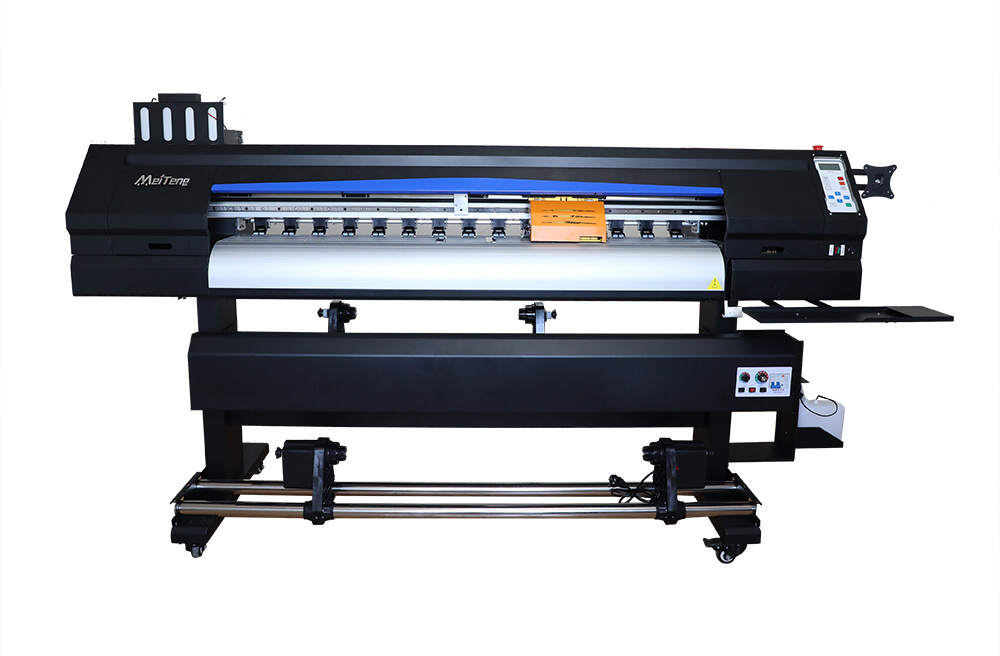Dye Sublimation: What Is It & How Does It Work?
June 01,2022
sublimation textile printer price,epson sublimation printer bundle,large format eco solvent printer
If you’re wondering, “What is dye sublimation?” you’re more than likely interested in creating unique promotion items, such as printing on mugs, t-shirts, and more. Dye-sublimation printing allows for vivid, sharp, and vibrant imagery – and stunning products.
It’s also quite affordable if you aren’t planning on printing a large volume of products at a time. In fact, this form of printing is appreciated because it helps keep the budget low when producing a small number of items. Not to mention, dye sublimation creates considerably long-lasting prints, known for being extremely slow to fade.

What is Dye Sublimation Printing?
Dye sublimation is a printing process using a specially designed ribbon that holds solid inks. The printer heats the ink, causing it to sublimate – which means it skips the liquid form and transitions directly into a gaseous state. (Another example of the use of sublimation within the industry is freeze-drying.)
Three primary colors are applied to the page or other material. Once the ink hits the media, it transitions from a gas back to solid, and a full-color image results. So that the ink does not smudge, the printer finishes by introducing a clear protective coating to the paper/substrate.
What is a Dye Sublimation Printer?
One way to understand a dye sublimation printer is to compare it to traditional inkjet printing. Here are three ways in which a dye sublimation machine differs from a standard inkjet printer’s process and capabilities:
- Operation — The ribbon-heating gas generation process of a dye sublimation printer is described above. In contrast, an inkjet printer controls where ink droplets spray onto media from its cartridge’s nozzles. The cartridge is moved from side to side, producing a spectrum of color through the placement of these microscopic droplets.
- Efficiency — The efficiency of a dye sublimation printer is not as impressive as that of an inkjet printer. Within the former, the trio of primary color panels does not completely transfer onto the page — with the ink that remains on the panels will go to waste. The inkjet printer, on the other hand, will only use the required ink for a job.
- Image Quality — Here, dye sublimation excels. Essentially, dye sublimation is similar to film, while inkjet printing is similar to video. The former creates an image similar to traditional photography, with a continually blended color range. A traditional inkjet printer is less seamless: you can see the primary color dots if the image is magnified. It is like an extremely detailed computer image.
What is Dye Sublimation Ink?
Dye sublimation ink is utilized, along with intense pressure and heat, to print onto novelty items such as coasters, t-shirts, plaques, and mugs. This form of ink has a few key benefits:
- It is longer-lasting than traditional inks. You will not see the image wash off or peel off of the printed item.
- Dye sublimation ink is water-proof.
- The high heat and coating make smudging nearly impossible.
- The accuracy is incredibly strong (given the specificity the vaporization allows over standard inkjet droplets).
What Materials Can Be Used in Dye Sublimation Printing?
These printers are not intended for typical workplace media such as printer paper, labels, or envelopes. Rather, they are popular for printing onto coffee mugs, t-shirts, and other novelty goods.
Substrates must be made of rubber, synthetic fabric, or plastic. This technology does not function correctly with cotton or other natural fabrics. Rather than bonding with natural fibers as it does with synthetic ones, gaseous ink passes straight through natural textiles.
Mouse pads, floor mats, coasters, flip-flops, event wristbands, bathing suits, shower curtains, and athletic apparel are examples of media containing the necessary materials suited to dye sublimation printing. Beyond these broad promotional uses, the machines can be used to create photo prints or postcards via specially coated media, such as cards or paper.
Dye Sublimation Printer Process: How Does it Work?
Again, what is dye sublimation? While the above information allows a better understanding of the basics, let’s get a bit deeper with the notion of transfer paper. Transfer paper is commonly used with these printers, although direct-to-fabric printing is also possible. If you use transfer printing, the process is a bit more complex.
For more information about sublimation textile printer price,epson sublimation printer bundle,large format eco solvent printer, we are glad to serve you.